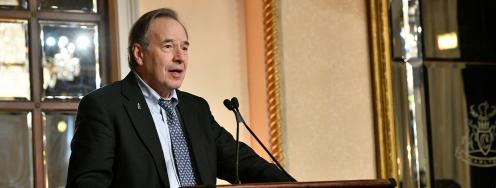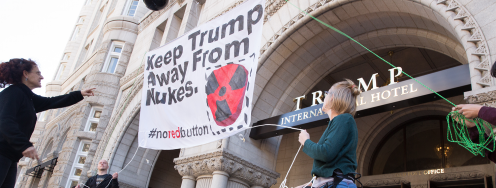A Hearing on Nuclear Cuts
For lawmakers, the question of how to make a tight defense budget effective at protecting our country is foremost on their minds these days. Restructuring the nuclear force to reflect today’s threats, rather than the threats of the Cold War era, is one solution to that problem - a solution that has started to be repeated around Washington.
In Congress, the idea of nuclear cuts found an official channel in a hearing called by the Senate Appropriations Subcommittee on Energy and Water to examine the size of the nuclear stockpile. Ploughshare Fund friends Ambassador Thomas Pickering and Gen. James Cartwright served as witnesses. Chairwoman Diane Feinstein (D-CA) introduced the hearing by referring to two recent reports published by Global Zero and the Stimson Center, both Ploughshares Fund grantees, which “caught her eye”. The Stimson Center report estimated that nuclear-related activities cost the U.S. $30 billion a year. The Global Zero report, co-authored by Pickering and Cartwright among others, outlined what a new “illustrative” future nuclear force might look like.
The hearing testimony focused on the past and the future. The past was highlighted by reviewing the character of our strategic forces, which still reflect the bi-polar standoff between the U.S. and the Soviet Union. As Gen. Cartwright put it, “that war is behind us”. The General also educated the Senators on how improved industrial practices mean that parts can be swapped between weapons if one fails, whereas in the past there had to be whole weapons in reserve. This means that we don’t need as many full weapons in our stockpile for a reliable force.
The testimony reflects the future because the force that Global Zero Commission has proposed would effectively provide deterrence while saving $100 to $120 billion over the next 15 years, according to Pickering and Cartwright. Their proposal includes keeping 900 weapons total in the stockpile (the U.S. currently has 1,500), eliminating nuclear-tipped ICBMs, scaling back the bomber fleet, shifting to fewer submarines, lowering demands on the nuclear complex, and shifting away from hair-trigger alert. This would not be done unilaterally, but through bilateral or consensual steps with Russia which, Amb. Pickering detailed, would also make it more likely that other nuclear countries would join in the disarmament dialogue in the near future.
A thoughtful consideration of strategy means using “what is most dangerous and what is most likely as a litmus test” for our force structures, said Gen. Cartwright.
Both the ranking member of the House Armed Services Committee and the chairman of the Senate Armed Services Committee have also recently identified the nuclear budget as a top area to find savings. Sen. Carl Levin (D-MI) calls the nuke budget “ripe for cuts” and Rep. Adam Smith said that there are “clearly savings” in the nuclear budget. In an exchange on the House floor last week, ranking member of the House Appropriations Committee, Rep. Norm Dicks (D-WA), a stalwart defender of defense, didn’t mince words over the nuclear force:
"You don't need thousands of these weapons. A couple hundred, frankly, could take out Iran and almost any country you can imagine. So, again, we can't afford to do everything. We are in an era where we're dealing with terrorists, and we need to have special forces that can be utilized. We need to have these very effective drones. We need to look at the threats that are out there today and equip our military accordingly."
These comments reflect that the mood in Washington is shifting. Big problems require big solutions. The image of a strong, strategic U.S. defense poised for today’s threats, rather than threats of the past, is finding its way into mainstream politics.



